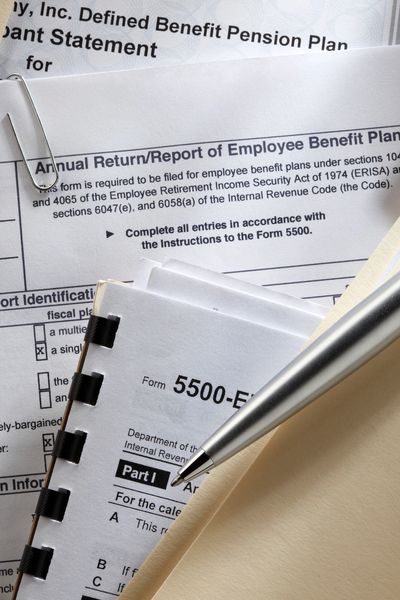Types of retirement plans
Traditional Defined Benefit Plans
A traditional defined benefit plan provides employees with a guaranteed retirement benefit that is typically based on a formula considering factors such as salary, years of service, and age. Unlike defined contribution plans, where benefits depend on investment performance, a defined benefit plan promises a specific monthly payment at retirement, giving participants financial security and predictable income for life.
For employers, traditional pension plans offer an opportunity to reward long-term employees and attract experienced talent with a valuable, stable benefit. Contributions are made entirely by the employer and are generally tax-deductible, providing a meaningful way to manage tax liability while investing in the workforce.
These plans are especially effective for business owners or key employees seeking to maximize retirement savings in a short period of time. By allowing for larger annual contributions than most other plan types, traditional defined benefit plans can help accelerate retirement readiness while ensuring consistent, guaranteed benefits at retirement. These plans can be designed to work alongside a 401(k) or profit-sharing plan, providing flexibility in meeting both employer and employee retirement goals.

Cash Balance Plans
A cash balance plan is a modern type of defined benefit plan that combines the high contribution limits of a traditional pension with the look and feel of an individual retirement account. Each participant’s benefit is expressed as a hypothetical account balance that grows annually through employer pay credits and interest credits. This structure makes the benefit easier to understand for employees while retaining the powerful funding and tax advantages of a defined benefit plan.
For small business owners, cash balance plans are a popular choice because they allow for larger, tax-deductible contributions than defined contribution plans, helping accelerate retirement savings and reduce taxable income. As with traditional defined benefit plans, they can also be designed to work alongside a 401(k) or profit-sharing plan, providing flexibility in meeting both employer and employee retirement goals.

Defined Contribution Plans
A defined contribution plan provides employees with an individual retirement account that grows through contributions made by the employee, employer, or both. Common examples include 401(k) and profit-sharing plans. Unlike defined benefit plans, the ultimate benefit depends on the amount contributed and the investment performance over time, giving participants greater control over their retirement savings.
For employers, defined contribution plans are an effective way to offer competitive benefits and support employee retention while maintaining predictable annual costs. These plans can be tailored to a company’s needs—whether through matching contributions, discretionary profit-sharing, or flexible vesting schedules—making them a versatile foundation for a comprehensive retirement program.

Copyright © 2025 MB Actuarial Services - All Rights Reserved.